-
Genealogy & Names
-
Tourist Information
-
Culture & Reference
|
September 2019 
Dublin scene image from Free Photos Of Ireland |

|
|

| Popular Articles from Recent Newsletters: |


|
Perhaps it is the relentless passing of time that has focussed the minds of the negotiators in the EU, Ireland and UK Brexit stand-off. Or perhaps it is a final realization that history will badly judge those who do not make every effort possible, and even be willing to concede some ground in order to finally hatch a solution. 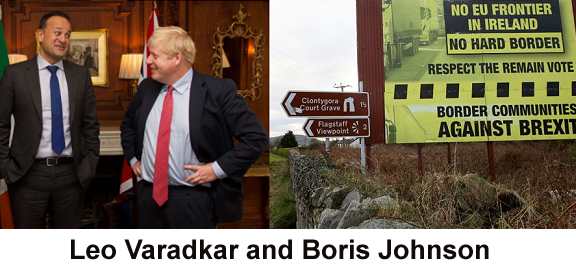
Whatever the reason, there are suddenly real prospects of a deal being struck between Ireland and Britain regarding Brexit. The decision by the UK to leave the EU was always going to be a difficult economic one to implement, but it is a political issue, namely the potential of a border between the South of Ireland and Ulster to the North, that has been the hardest to resolve. With the Democratic Unionist Party (DUP) holding the balance of power in the English Parliament over first Theresa May and now Boris Johnson, their attitude has been resolute throughout. To get their support Ulster must be treated the same as the rest of the UK. Specifically, this means that if the UK leaves the EU then Ulster must do so also, a fact that would make a land-border compulsory. Thus the 'Backstop' was born. This is basically a political fudge that would allow Northern Ireland to remain in the economic 'customs union' of the EU, while politically still being part of the UK. While the DUP have opposed this at every turn, they are now facing the realization that a no-deal UK crash-out with a border installed might actually hasten that which they fear most: a United Ireland. Given that the majority of people in Northern Ireland actually voted to stay within the EU it is possible that a vote to unite the North of Ireland with the South might actually succeed, if the citizenry are faced with economic chaos. Of course the UK Prime Minister Boris Johnson has his own agenda. He desperately wants to deliver Brexit by the October 31st deadline. If this means ceding some ground about the Backstop then so be it. He will then call a General Election in the UK confident of his ability to return his Conservative Party to power having managed to get the Brexit job done. And for Ireland, the most important issue is not to return to a physical border between North and South. Suddenly the two competing goals seem a lot closer to achieving, despite DUP objections. |

|
The policy of offering more College Application points (CAO points) to students who studied the higher level of Mathematics in the Irish Leaving Certificate examination seemed like a good idea at the time. 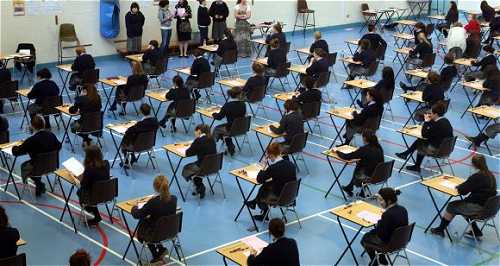
The Government has been pushing the STEM subjects (Science, Technology, Engineering and Maths) in recent years in the hopes that the already high supply of graduates capable of finding employment in one of the many International companies operating in Ireland will increase further. But the revelations in the report from EPISTEM, the national centre for excellence in science and maths education, based at the University of Limerick, show that many students who take the higher level exam are doing so only in the hope of achieving a bare pass in order to gain the extra points. The initiative has also resulted in the higher level classes being swelled with students who are clearly struggling with the subject, doing just enough to survive and therefore not raising the overall level of academic proficiency whatsoever. In fact the standard may have even gone backwards. 47% of higher-level students scored at least 70% in the exam in 2011. By 2018 this was down to 37%, although this is against a backdrop of an increased number of students sitting the exam (16% in 2012, 32% in 2018). It is further speculated that those students chasing the extra college admission points that are available for taking higher level maths may be doing so at the expense of other subjects that may be suffering due to their commitment to a subject that they are barely capable of keeping up with. |

|
Catholic Pilgrims have been making their way to the 'Vintage Vendors' shop in Tralee, County Kerry to pay homage at a cabinet that has a grain pattern resembling an image of the Virgin Mary. Owner Tom Culhane originally spotted the cabinet on an online ad and claims that he has since received offers in excess of 10,000 Euro for the piece. 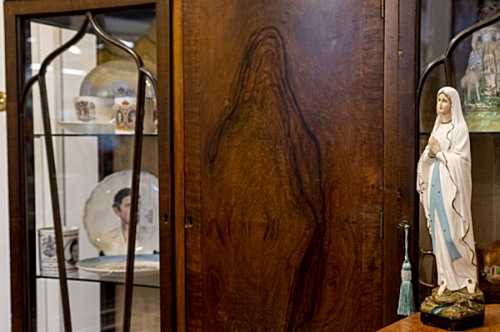
'It was built in about 1905 or 1910 in Hereford, England by Greenlands and Co. that I purchased this year in Kerry. I saw a DoneDeal post and I didn't even notice from the picture at the time that there was anything special about it. I just thought it was a nice cabinet that would be suitable for a section of the shop to display things. There's people in that were kissing the cabinet, rubbing the cabinet, saying prayers and just taking pictures with the cabinet. People wanted to buy a picture of the cabinet that we have up in the shop and we couldn't sell it to them and they want to come back and buy it' |

|
FIND YOUR NAME IN OUR GALLERY OF IRISH COATS OF ARMS

|

|
When we were young in the nineteen fifties we used to discuss what the birds said. We could never agree about the black bird, the thrush or indeed any other songbird but we all knew what the corncrake said. He went 'grake grake, grake grake, grake grake' and everybody knew that meant, stand back, stand back, stand back. At that time there was a corncrake in every field in Ireland. 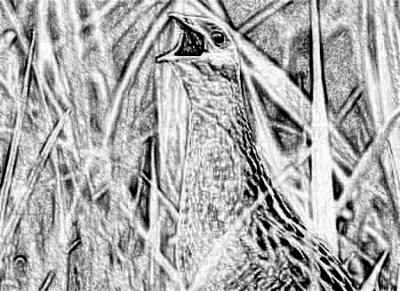
At this time there was a certain young girl who had just turned sixteen and she had her mother annoyed to let her go to a dance in the town but there was no way her mother would agree as she did not have a chaperone and towns fellows were not to be trusted. Then luck struck. The local GAA club hired a big tent in which to run a carnival for two weeks and it was close by the girl's house. Now she could go dancing. She cycled to town and bought a lovely piece of material and a pattern. The material was spread out on the kitchen table, the pattern carefully spread on top. There was great excitement. The mother was more jittery than the daughter. They had just got in the electricity. They had a brand new singer sewing machine. 'We will put in shoulder pads and you can wear your new bra. I will lend you my black patent belt to match the shoes, sure it would go twice round your little waist.' These were modern times. For the moment meals were suspended. The men could grumble and wait. Oh it was wonderful, Harry Belafonte was singing on the wireless, 'I see woman on bended knee, cutting cane for her family,' 'Well God be with the days.' 'I see man by the waterside, casting nets at the surging tide.' 'He might as well be, as looking for a bit to eat round here.' In spite of those unhelpful remarks and a few minor glitches the needlework classes paid off, the project was successful and the dress was completed. Now for the hair! All hell broke loose. After tea, her mother rolled her hair on her finger and held each curl in place with a pipe cleaner. It took ages and was sometimes painful but there were no complaints. You have to suffer to be beautiful. Next day, when the pipe cleaners were removed the hair brushed out perfectly. On the night when she put on the multi-coloured dress over the new bra, with the shoulder pads and the patent belt, she was beautiful. Even the hungry grumblers agreed. 'Mammy' she said, 'What is it a Gra?' (Love) 'If a boy wants to walk me home after the dance, will it be alright?' 'I suppose as the place is well lit up and if he is a nice respectable country boy, it will.' 'Mammy.' 'What is it now child?' 'If the boy wants to kiss me will I let him?' The mother thought for a moment, her mind was racing, racing back to her own youth, her dreams, her dilemmas, her desires. 'You can if you both agree to obey the corncrake and when he calls stand back you're to stand back.' As it happened, the boy who walked her home on the night was a friend of mine and next morning I waylaid him. 'Well how did you get on?' 'How did I get on?' says he, with some agitation. 'I'll tell you how I got on! You know as well as I know that the sweet girl lives only a hundred yards from the marquee, and I walked her home all of five miles but we never did get away from the blooming corncrake.' Pat Watson 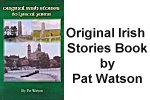
'The Corncrake' is one of sixty lyrical yarns from 'Original Irish Stories' by Pat Watson, Creagh, Bealnamulla, Athlone, Ireland. Visit: https://goo.gl/FDp48v or you can email the author here: pjwatson77@gmail.com |


find out more |

|
The quest for a Socialist society was always at the heart of everything James Connolly tried to achieve. He was born into an Irish immigrant family in Edinburgh, Scotland in 1868, his parents having emigrated from County Monaghan. The Cowgate district of Edinburgh where the family lived was a notorious slum with few opportunities. He left school at the age of 10 years and, like so many of his Irish compatriots found that the only means he had of making any kind of a living was to enlist in the British Army. He lied about his age and enlisted at the age of 14 years old. He served in Ireland in the 2nd Battalion of the Royal Scots Regiment during the rural unrest at the time of the Irish 'Land War'. 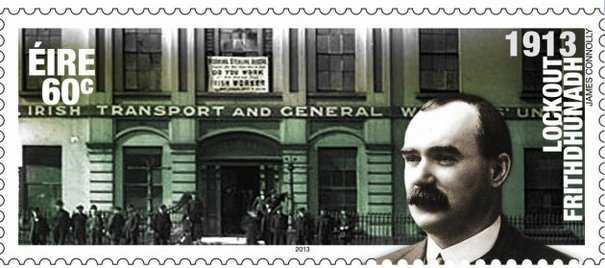
He despised the British Army and deserted when he learned that his Battalion were soon to be transferred to India. He escaped to Edinburgh with his soon-to-be wife Lillie Reynolds. It was there that he became involved with the Scottish Socialist Federation and began a life of organizing and campaigning. In 1892 he had the opportunity of a job as secretary to the Dublin Socialist Club, a job paying a pound a week, so Connolly moved with his family to Dublin. This club evolved into the Irish Socialist Republican Party which Connolly helped found. But Connolly became so frustrated with the lack of progress with the ISRP and the continuing inequality in Ireland that he emigrated to New York in 1903. He founded the Irish Socialist Federation in 1907 and during these years he toured, lectured and wrote about socialism and his ideals, among them the oft cited 'Labour in Irish History'. He returned to Dublin in 1910 and joined James Larkin in the fight for workers rights in Dublin, fronted by the Irish Transport and General Workers Union. The 1913 'Lockout' was a pivotal moment in Irish history and it involved over 20,000 poor, working class citizens standing up for their rights against the might of the established Dublin employers, fronted by William Martin Murphy. Despite the breaking of the strike, the attitude of defiance against injustice that had been generated continued to be stoked by not just those in the Socialist movement but by the organizers of the planned rebellion against British rule, culminating in the 1916 Easter Rising. It was during the Lockout that Connolly helped found the Irish Citizens Army, who were trained to defend workers and protesters engaged in marches and strikes. He had earlier founded the Irish Labour Party in 1912. He opposed the First World War on socialist ideals. 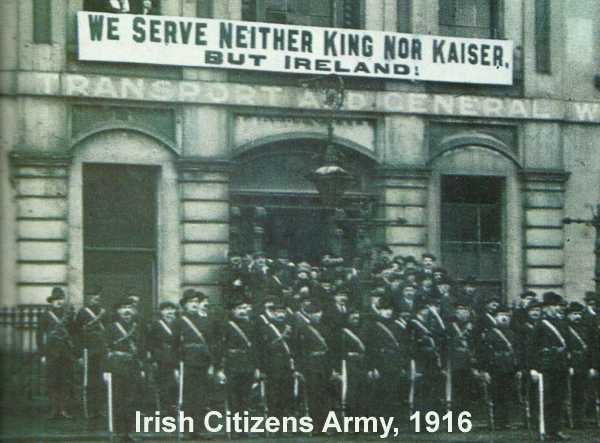
Connolly was skeptical of the leadership of the Irish Republican Brotherhhood (IRB), who had already begun hatching their plans for a rebellion. He goaded them, resulting in Tom Clarke and Padraig Pearse meeting with Connolly to see if a joint action could be arranged. They agreed that together they would strike at Easter. The Easter Rising began on 24th April 1916 with Connolly as Commandant of the Dublin Brigade. It was this band of the rebels that would see most of the fighting action so Connolly was in effect the de-factor commander of the rebellion. His leadership of the rebels was legendary. The rebellion failed when the British army brought the gunboat 'The Helga' up the River Liffey and pounded the GPO where the rebel leadership were stationed. Connolly was sentenced to death for his part in the rebellion. Despite being seriously injured, he was propped up in a chair and executed by firing squad in Kilmainham jail on the 12th May, 1916. The execution of the rebel leaders was a turning point in Irish history. In the wake of the destruction of large parts of Dublin city the rebels had been castigated by the majority of Irish people for their actions, but, once they became martyrs then public opinion changed rapidly. The account of Connolly being carried out on a stretcher, already near to death, and tied to a chair before being shot particularly resonated and stoked the fury of the Irish masses. The War of Independence, the subsequent Civil War and ultimately the creation of the Irish Republic in 1949, can all be traced to the Easter 1916 Rising. James Connolly is always remembered as being one of the leaders of the 1916 rebellion, but his teachings have also been widely adopted by a number of socialist groups in Ireland. Critics of his philosophy claim he was an extreme socialist, a Marxist even. He envisaged socialism as Industrial Union control of production and envisaged an independent Ireland as a socialist republic. 'If you remove the English army tomorrow and hoist the green flag over Dublin Castle, unless you set about the organisation of a Socialist Republic your efforts will have been in vain. England would still rule you. She would rule you through her capitalists, through her landlords, through her financiers, through the whole array of commercial and individualist institutions she has planted in this country...' He gave his life in his quest for the freedom for Ireland and his search for a Socialist society. |

|
||||

|
'I am not writing Irish history at the behest of anyone or in any hope of profiting by it, but because I thought a country as worthy of honour as Ireland and people as noble as those who have inhabited it, should go down into oblivion till their story was told.' Thus wrote Geoffrey Keating in his 'Groundwork of the Knowledge of Ireland 1632'. Keating had no political or ethnic axe to grind, being himself Anglo-Irish and some years before Oliver Cromwell's fateful descent on our island. Indeed, the inherent characteristics of the Irish, before that scythe of devastation as compared to those forced upon them in the decades after the British Army departed, is highlighted most graphically in this account from Dionysius Massari, Dean of Fermoy, secretary to Archbishop Rinuccini and Papal Nuncio to all Ireland. 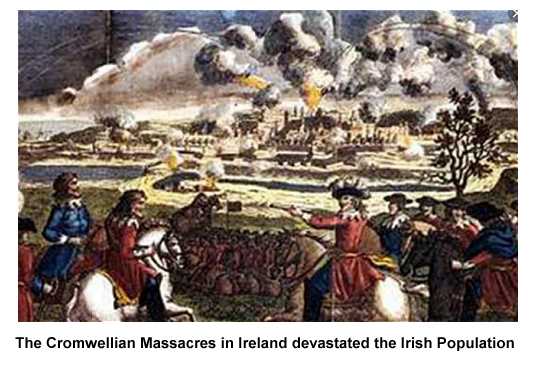
'The women are distinguished by their grace and beauty, and they are as modest as they are lovely. Their manners are marked by their extreme simplicity, and they mix freely in conversation on all occasions without suspicion or jealousy...' Massari goes on to extol their stylish modes of dress, their appreciation of Spanish and French wines, the abundance of food of all descriptions, which is cheap, indicating a healthy economy, citing as an example – 'the horses are numerous, strong, well built and swift. For five pounds you can buy a nag which in Italy could not be got for a hundred gold pieces.' Contrast this with J P Prendergast's 'The Cromwellian Settlement of Ireland', only ten years after that letter: 'Ireland, in the language of the Scripture, lay void as a wilderness. Five-sixths of the people had disappeared. Women and children were found daily perishing in ditches, starved. The bodies of many wandering orphans, whose fathers had been killed or exiled, and whose mothers had died in the famine, were preyed upon by wolves.' The British authorities estimated that up to 1641 there had been 6 Irish people to every English person in Ireland; a mere 15 years later that statistic was virtually reversed. The recovery from such planned genocide was inevitably slow and unquantifiable; suffice to say that our loss was the world's gain. The infamous Treaty of Limerick, perhaps the single greatest swindle in Ireland's history, led to 'The Flight of the Wild Geese'. This romantic-sounding title for what was in effect a sad, sad exodus, obscures a weeping wound that worsened to a haemorrhaging of our remaining life's blood. All that was good and honourable in Irish society at that time felt there was no place for them there, their talents and inherited gifts of oratory, courage and weaponry now disregarded – perhaps feared – by the new powers-that-be. Not so in Europe and beyond... Thomas Carlyle – whilst researching his 'History of Frederick the Great – remarked on continually running across 'very many Irish' in Prussia. Their seed was plentiful and strong, the War Office of the Irish Republic reckoning that, from 1691 to the Battle of Fontenay in 1745, over 400,000 Irishmen died fighting in the service of France. Throughout the next century Irish officers and their regiments dominated the European scene. Names that today can still be found in any Irish telephone directory reclaiming a glory many had thought gone forever. The O'Briens, the Lacys, the O'Rourkes, O'Connells, O'Neills, McCarthys...the list goes on and on. Not only that, they went on to attain the highest honours and positions in their adopted lands. Marshals (of France and Russia), Ambassadors (to France, Russia and Sweden), bishops, governors, dukes, presidents, prime ministers, viceroys; their tunics dripping with honours from every royal house in Europe. They not only placed a distinctive stamp on the future of the western world they cocked a snook at those who had contemptuously rejected them. Jonathan Swift, perhaps the loftiest of all 18th century intellectuals, saluted them thus: '...those gentlemen of Ireland, who, with all the disadvantages of being exiles and strangers, have been able to distinguish themselves in so many parts of Europe, by their valour and conduct above all other nations.' Small wonder; after the British disaster of Fontenay, when the Irish regiments swept the opposing English forces away with the cry, ‘Remember Limerick!' King George II exclaimed: ‘Curse the laws that deprive me of such subjects!', referring to the denial of Irish citizens the privilege of serving the Crown. One could go on and on – of the nine Irish Field Marshals who served in the Austro-Hungarian Empire, of Field Marshal Alexander Count O'Reilly, who started out by saving Charles III life during a revolt in Madrid and went on to reform the Spanish Army, ending up Lieutenant- General of of Louisiana. Or Patrice Maurice de McMahon, created Duc de Magenta and later first President of France. It is interesting to note that during this period of European history, the fates of a dozen countries was held in Irish hands. Not bad for a bunch of no hopers! But before we leave the Continent it is perhaps timely to reflect on the present economic and political climate in our day-to-day lives, and how different it all would be if its 'Father', General Charles de Gaulle, hadn't had his Grand Design... not to mention where he would be if his great-grandfather hadn't met and married a certain Josephine McCartan from County Down! Something for future would-be dictators to reflect upon, perhaps, before they go messing about with other people's destinies. Shaun Ivory 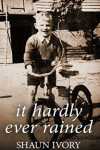
Visit the authors Amazon page. |

View the Archive of Irish Phrases here: http://www.ireland-information.com/irishphrases.htm |

|
The winner was: Barryb@nexicom.net who will receive the following: A Single Family Crest Print (usually US$24.99) Send us an email to claim your print, and well done! Remember that all subscribers to this newsletter are automatically entered into the competition every time. I hope that you have enjoyed this issue! 
by Michael Green, Editor, The Information about Ireland Site. http://www.ireland-information.com Contact us (C) Copyright - The Information about Ireland Site, 2019. 17 Páirc Ghrainbhil, Carraig Dubh, Contae Baile átha Cliath, Ireland Tel: 353 1 2893860 |

|
MARVELOUS GIFTS FOR ANY OCCASION FREE DELIVERY TO YOUR DOOR 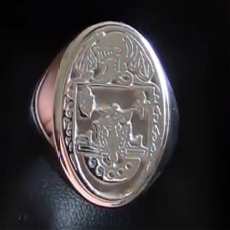
BIG REDUCTIONS! Stunning Family Crest Signet and Seal Rings 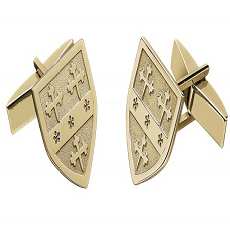
DISCOUNTED FOR A LIMITED TIME Elegant Cufflinks 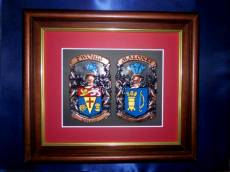
Incredible Family Crest Plaques Made in Ireland 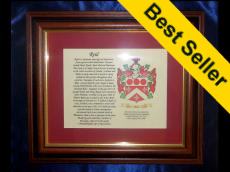
Superior Framed Family Crest Parchments 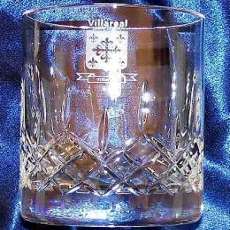
Gorgeous Glistening Galway Crystal 'Your-Name' Old Irish Sign NEW DESIGNS! 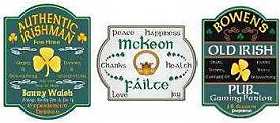
From US$34.99 - Free Delivery 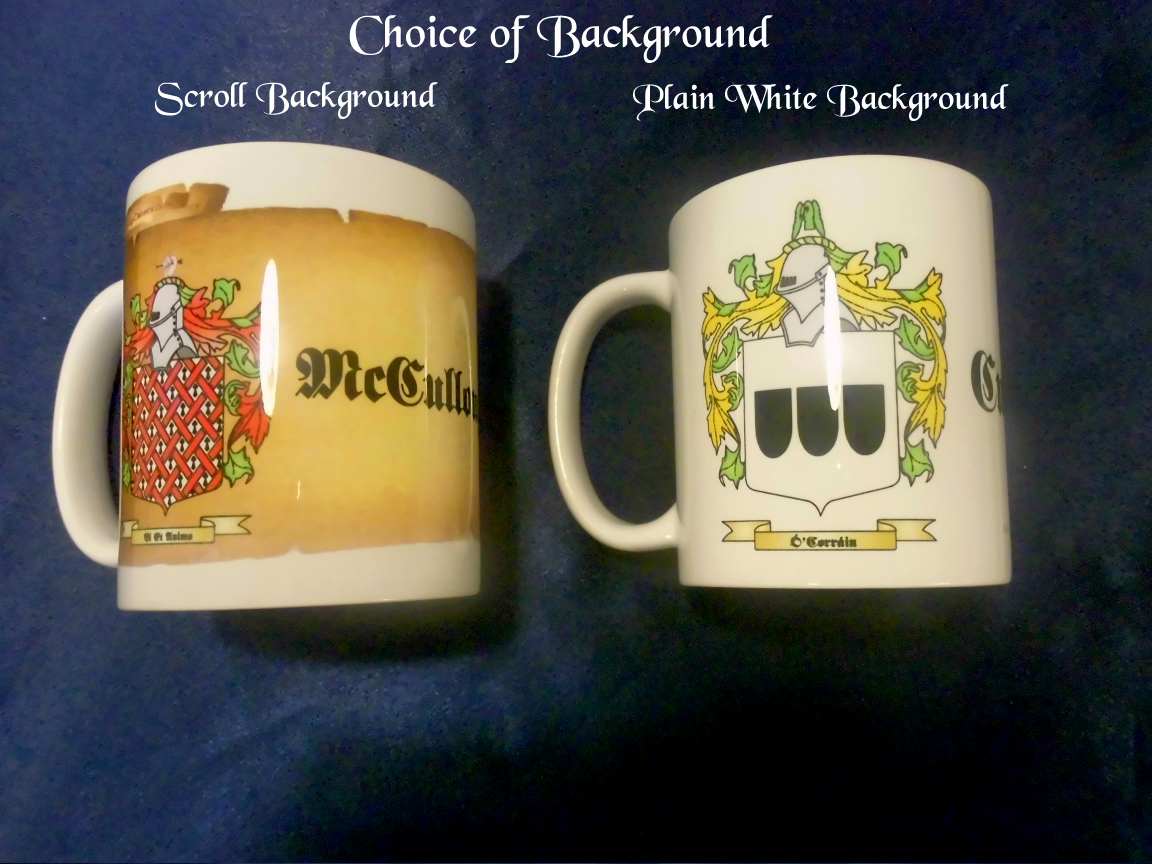
New Designs available on our Coffee Mugs 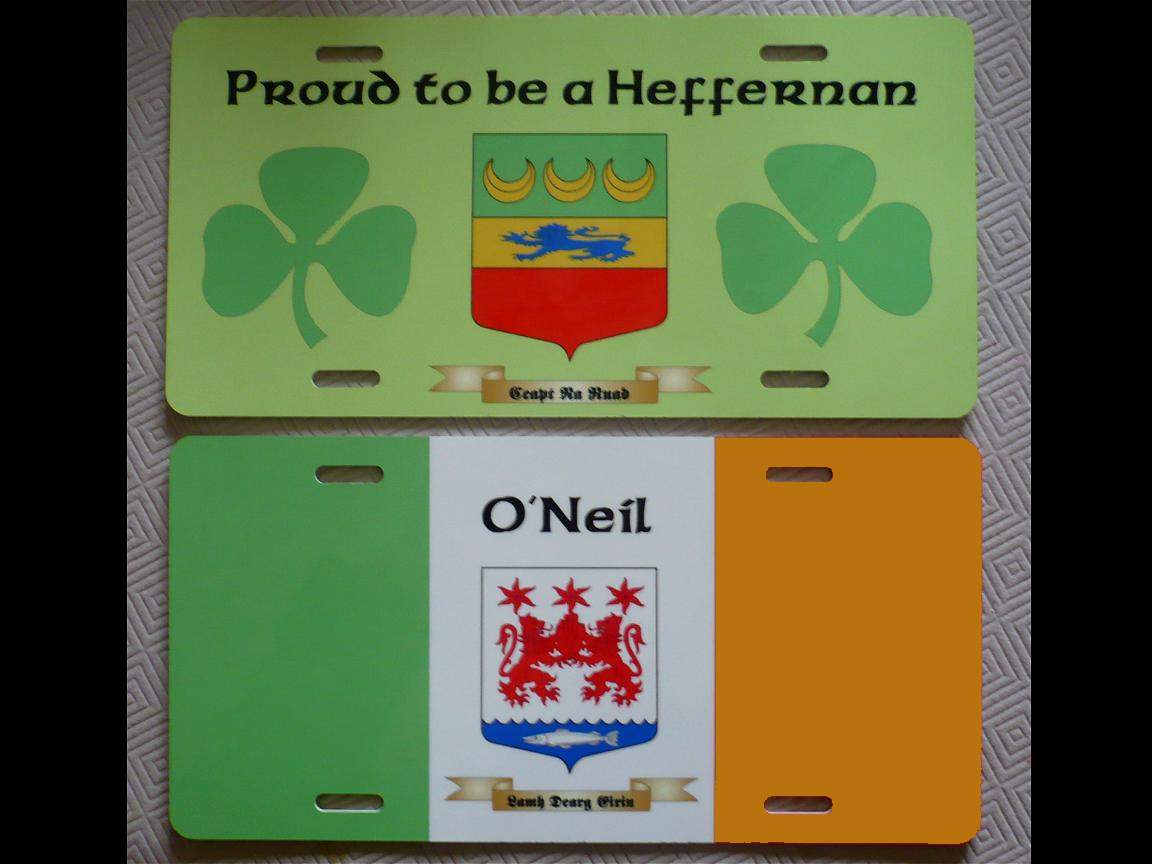
Personalized Licence Plate 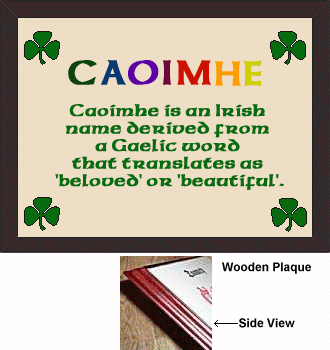
Personalized First Name Plaque. Great for Kids! 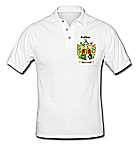
'Your-Name' Polo & Tee Shirts 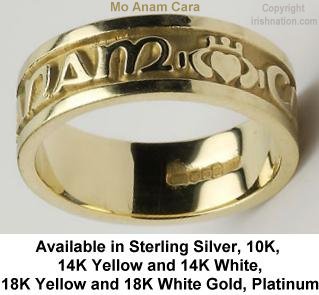
From US$69 Delivered BIG REDUCTIONS! Stunning Engraved Rings from Ireland with Irish Language Phrases. Mo Anam Cara: My Soul Mate Gra Dilseacht Cairdeas: Love, Loyalty, Friendship Gra Go Deo: Love Forever Gra Geal Mo Chroi: Bright Love of my Heart SEE MORE GREAT OFFERS AND DISCOUNTS AT: IRISHNATION.COM FREE DELIVERY FOR A LIMITED TIME! |
